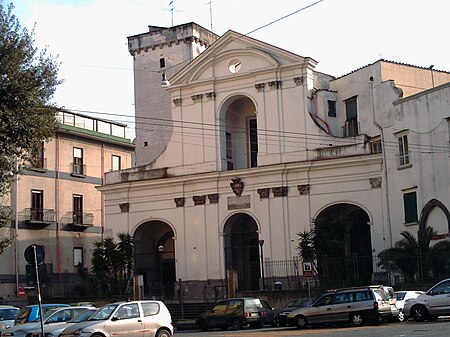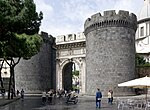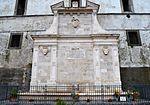Sant'Antonio Abate, Naples
Roman Catholic churches in Naples

Sant'Antonio Abate is an ancient church of Naples, located at the beginning of the village of the same name: Borgo Sant'Antonio Abate. Legend has it that the church, placed at the origin of the village of the same name, was founded at the behest of Queen Joanna I of Anjou, but a diploma of King Robert of Anjou, shows that, as early as March 1313, there were church and hospital and that in this place the sick were cured of the disease called "sacred fire" or shingles, a product derived from pig fat. This church was the site of the Sacred Military Constantinian Order of Saint George. In this church there are two most important paintings by Luca Giordano.
Excerpt from the Wikipedia article Sant'Antonio Abate, Naples (License: CC BY-SA 3.0, Authors, Images).Sant'Antonio Abate, Naples
Via Sant'Antonio Abate, Naples Municipalità 4
Geographical coordinates (GPS) Address External links Nearby Places Show on map
Geographical coordinates (GPS)
| Latitude | Longitude |
|---|---|
| N 40.8612 ° | E 14.2651 ° |
Address
Chiesa di Sant'Antonio Abate
Via Sant'Antonio Abate
80139 Naples, Municipalità 4
Campania, Italy
Open on Google Maps










